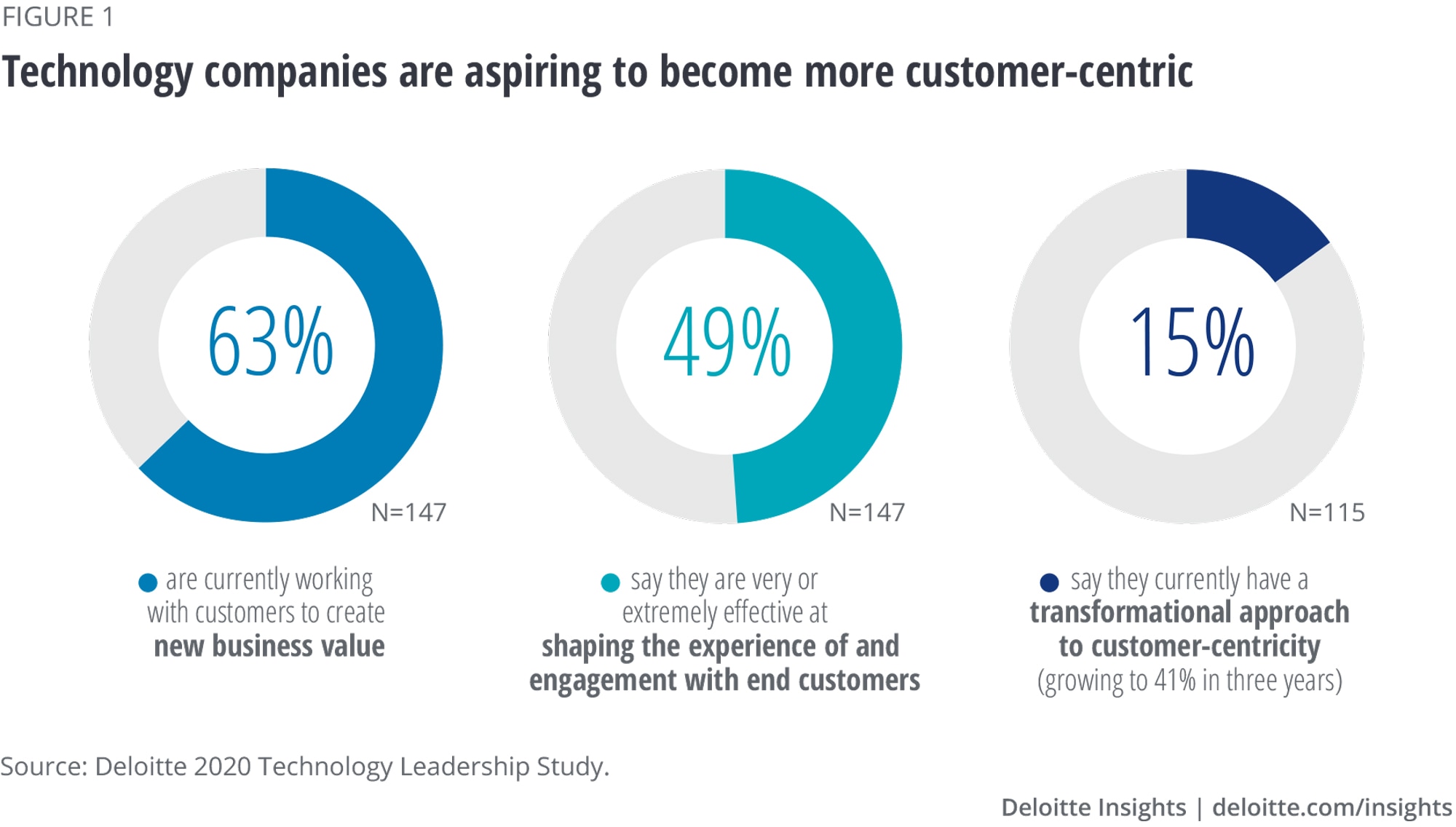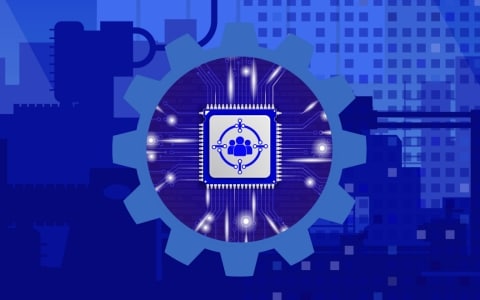Anticipating new needs to ensure customer success How HP is strengthening its customer and partner relationships in a time of change
5 minute read
16 December 2020
How technology leaders—and HP in particular—are working to stay customer-focused even as customer needs shift with the COVID-19 pandemic.

Traditionally, successful businesses have maintained an unwavering focus on the customer. And Deloitte’s recently released 2020 Technology Leadership Study (a survey of more than 1,300 CEOs, CIOs, and other business and technology leaders) suggests that this focus endures.1 The study identifies a group of “technology vanguard” organizations that are more advanced than their peers across vision and strategy, technology function maturity, and market leadership. These vanguard organizations turn out to be distinctly customer-first, leveraging technology to improve the customer experience and engage customers in their innovation process. The study found that:
- 60 percent of vanguards identify customers as a top business priority—more than growth or cost reduction.
- Nearly three-quarters of vanguards are working with customers to create new business value.
- Vanguards are 2.5 times more likely to be extremely or very effective in shaping customer experiences and engagement.
Learn more
Explore the Thinking Fast series library
Subscribe and never miss a charticle
Learn about Deloitte's services
Go straight to smart. Get the Deloitte Insights app
Maintaining a customer focus, though, has been increasingly challenging lately, as the COVID-19 pandemic has redefined the nature and needs of the customer for many industries. To get a perspective on how technology companies are facing this test, we spoke with Christoph Schell, HP’s chief commercial officer. He has seen the pandemic swiftly redefine the company’s customer relationships, transforming—perhaps permanently—both customer expectations and the very nature of the customer relationship with HP as a trusted brand that delivers sustainable outcomes.
Shifting work practices have blurred what was once a clear line between consumer and enterprise needs. With many people working full-time from home and parents having to monitor and oversee their kids’ daily learning, Schell has seen the rise of many more “prosumers” and “living-room CIOs.” These customers have different requirements than they did in their traditional office-based roles. Before the pandemic, the complete blending of work, school, and life had occurred only in pockets; now it is at scale and happening, in a similar way, all over the world. This is transforming the way HP provides home office infrastructure.
This has been especially challenging for the enterprise CIOs with whom HP works. Many companies have developed a consumer mindset toward IT capabilities over the last few years, with employees expecting IT departments to provide work-based experiences similar to their home services (subscriptions and apps, advanced capabilities, simple and intuitive user experiences, etc.). With entire enterprises working from home now, that mindset has prevailed, and both technology leaders and users are looking for more flexible solutions that provide trust, safety, and convenience. Unsurprisingly, right now employees see particular value in anything that can alleviate frustration and anxiety.
Schell sees enterprise decision-makers considering some of HP’s solutions designed originally for consumers. As an example, he points to HP’s Instant Ink, a subscription-based plan for printer ink replacement based on consumption patterns—that is, how much you print. Based on signals from a user’s printer, HP anticipates the need for new ink cartridges and sends them out. The program used to service only consumers and small businesses, but enterprise clients are keen to understand how it might support their work-from-home employees. The program answers the call of the “new customer”: It anticipates needs, you don’t have to leave home, and additional services can be added when needed.
Although HP’s overall vision has remained unchanged, the new customer is accelerating existing programs and driving new ways of thinking. The customer journey is now more and more wholly digital for everyone—enterprises, governments, and consumers. Schell identifies two keys to making that journey successful: consistency and personalization.
Throughout the online journey, wherever a customer accesses or engages with HP, they should have a consistent and trusted experience—one that provides the same level of value. In order to ensure that value, the company looks at each customer as a segment of one—a single customer at a single point in time. For customers who opt in, this vision allows HP to utilize such customers’ digital footprints to anticipate what they may need in the future: proposing solutions to problems before they ask.
HP can’t do this alone. The company relies on its vast network of partners to make it happen—partners that bring more than 80 percent of HP’s revenue.2 “The keys,” Schell says, “are how we show up together, analyze data to create a value proposition together, offer that value to customers together, and then repeat.”3 Even before the pandemic, HP was looking to transform its channel partner program to codify and drive this approach. HP country and market leaders announced HP Amplify in July and began rolling it out in November, offering an integrated way for partners and HP to more deeply engage customers.4
This new approach has presented challenges. Trust is paramount: All parties must demonstrate that they are in the relationship together and for the long run, or it won’t work. The shift from transactional engagements to an outcome-based business model takes time and a change in perspective. And the approach demands plenty of training, coaching, and the right talent. This is especially true for sales, Schell says: “Salespeople still need to excel in relationship management, but now they also need to have more data science expertise, be able to effectively leverage automation tools, and embrace social selling to create a relationship with decision-makers.”5
Implications for executives
It’s easy to say that putting the customer at the center of everything is critical—indeed, the decades of the-customer-comes-first adages may make it too easy to say. But actually doing it can be difficult, especially when involving a broad ecosystem. Schell recommends that organizations take three steps to build trust, value, and competitive advantage together with partners and customers:
- Create individualized experiences. In today’s radically different work and home environments, customers expect and deserve more. They want flexible and customized products and services that match their unique usage patterns and add no new burdens.
- Focus on consistency. Whenever and wherever a customer connects with your brand, either directly or indirectly, make sure the level of value and trust is uniform. This consistency should follow the customer anywhere in the world—including at home.
- Ensure that data capabilities can support customers. New digital journeys for customers often require new frameworks and approaches that are powered by their data, provided they consent. Develop easy, secure ways to share data with your sales teams and broader ecosystem to enable greater personalization and anticipation of customer needs.
This article is part of an ongoing series of interviews with executives. The executives’ participation in this article are solely for educational purposes based on their knowledge of the subject and the views expressed by them are solely their own. This article should not be deemed or construed to be for the purpose of soliciting business for any of the companies mentioned, nor does Deloitte advocate or endorse the services or products provided by these companies.
© 2021. See Terms of Use for more information.
More from the Technology collection
-
Human experience platforms Article5 years ago
-
Robots on the move: Professional service robots set for double-digit growth Article5 years ago
-
A foundational pivot for digital transformation Article5 years ago
-
How countries are pursuing an AI advantage Article5 years ago
-
Tech Trends 2025 Article3 months ago
-
Rebuilding a stronger digital society Article4 years ago












